Interview: Nin Studio
Brittany Maton is the energetic young artist behind Nin Studio
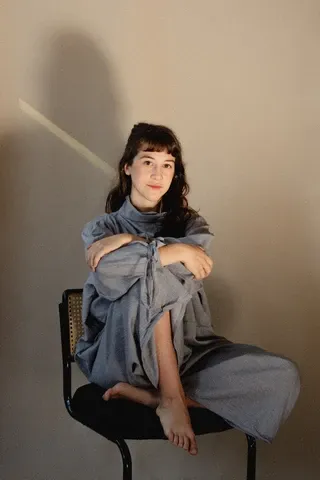
Brittany Maton is the energetic young artist behind Nin Studio - a Mexico City based clothing and objects brand.
We connected to discuss her new collections, Mexico vs Australia where she is originally from and the future of creative enterprise.
Britt:
I'm in inside Mexico City. So, I'm in an area called La Juarez, and I'm at my studio it's a 30 minutes bike ride from where I'm living.
Robert:
Do you bike in Mexico City to your work?
Britt:
Yeah. It's good. I really like biking, but it's intense.
Robert:
You are insane. I know they're very into cyclovias now in Mexico City, but I don't think one could pay me to bike for 30 minutes through Mexico City, but I commend you, Britt, on that, engaging in bike culture in Mexico City.
Britt:
You have to really fight when biking inside the city. For example you're biking and all of a sudden a cab will go around you and stop in your way to pick up someone, rather than slowing down slightly behind you. It can be infuriating but a big practice of concentration and patience.
Robert:
First of is your family ok in Australia? What is happening in Australia? Can you explain to me?
Britt:
Honestly, it's so hard nowadays to know what's going on when you are not there especially because of all the media and the different opinions. My mom is pretty worked up over everything, I think she's feeling like the freedom of choice and speech is being threatened.
Robert:
In terms of freedom, or in term of fear of COVID?
Britt:
Freedom and how the governments are suppressing information and the peoples right to protest. I think there are some people that view it as an authoritarian suppressing vibe. And then there's the other side of people not really thinking anything's wrong or truly wanting to engage in the conversation. So, you have both those dualities happening over there.
I just met an Australian guy in Oaxaca, he said that one of his Australian friends, her mom had passed away during the pandemic and wasn’t able to get back into the country. There I know are countless stories like this.
When the pandemic hit the Australian embassy told me "We're closing our borders, you have to go home within 24-72 hours. And I knew, “okay, fuck, I have to make a decision. Do I stay in Mexico or do I go back?” So, I'm pretty happy I stayed in Mexico.
Robert:
I think you did the right thing. I can't believe how far Australia has gone. I thought they were a bunch of wild men and now they have a disturbing... Here in Hawaii, we're in the middle of the hysteria. California, I think has gone full hysteria in LA. I went to Florida in July, which is like Sweden, to see the other side where there's no rules. There's absolute nothing. It's absolutely like 2018, no problems. Both worlds are very interesting. Hawaii is in the middle. I think Mexico is in the middle.
Britt:
Yeah. Mexico's in the middle. It's good to be in a neutral reality
Robert:
You don't have the passport thing. Do you?
Britt:
No, I have a visa now.
Robert:
No, no, no, I mean in terms of the vaccine passport.
Britt:
Oh no, I don't yet. No.
Robert:
Because Mexico City doesn't have that. Right?
Britt:
No. Mexico City doesn't and probably won't, they've been so relaxed. Since the beginning, Mexico hasn't had any extreme policed restrictions.
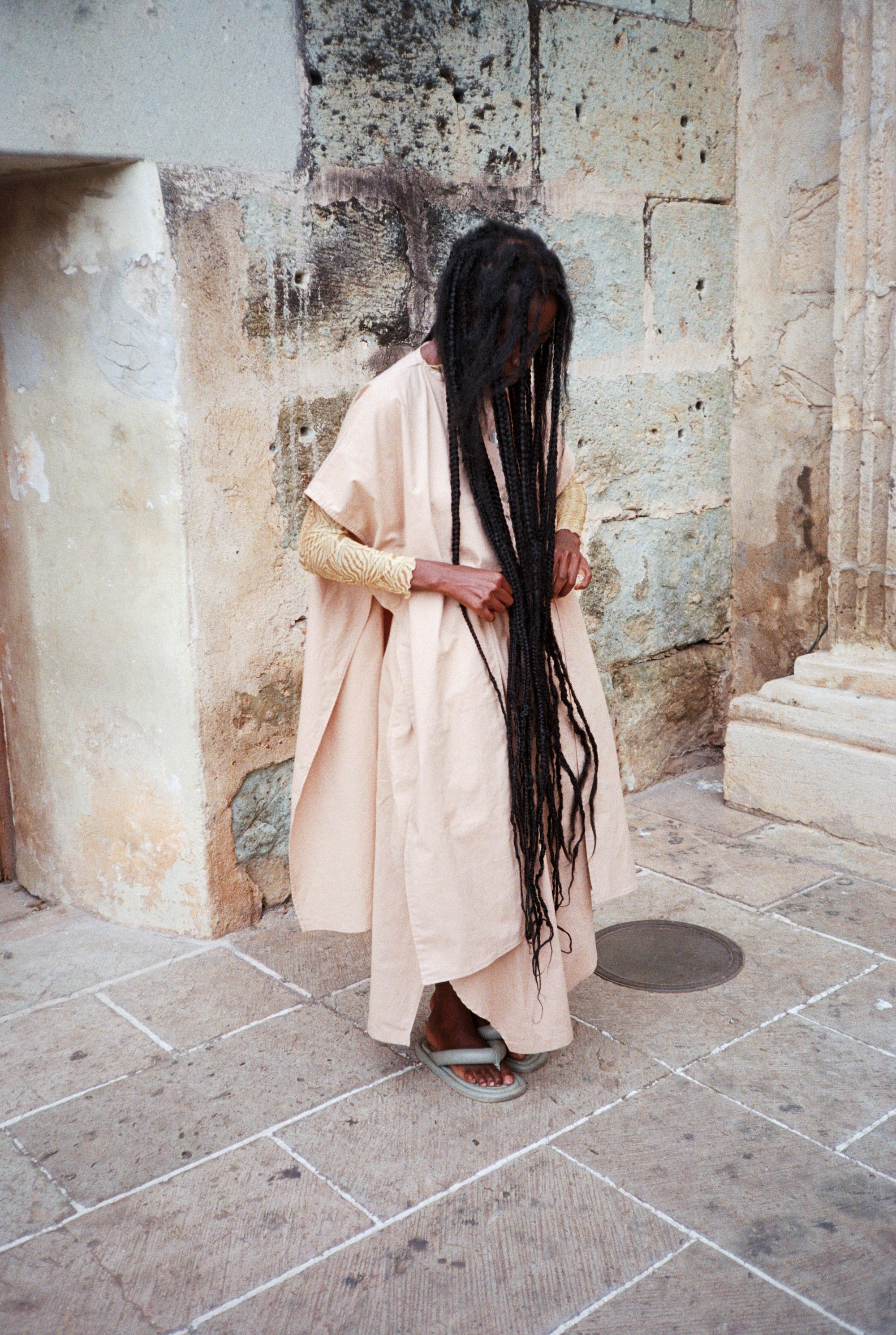
Robert :
So anyway enough about the pandemic - tell me more about your beautiful line. I look at your website and I get your newsletters, which I really enjoy… It looks beautiful.. Tell me how it's going?
Britt:
Oh, thank you so much. Yeah, it's going really well. I'm enjoying using clothing as a medium to create. Yeah, I'm definitely more of a creator and artist than I am a designer. So, pleating has been super fun to get into for the first time. Every collection I'm trying to do something new or, get more in touch with what exactly it is that I'm saying through form. So the idea is to have a super strong language that, for example Issey Miyake has built a consistent language in their pieces, even if it's very similar to another pleating designer, you can see from the fabric and the quality that that's Issey Miyake.
So now it's becoming like, okay, if I'm producing clothing, if I'm producing a form object in the world right now, it has to be super good quality and something saying something that's unique and strong. So that's been a huge process of what's guided the journey to where I am now. Going into the production of pleating was a mess, it was an absolute mess here. So, I learned a lot through that failure and just continuing to organize and restructure.
And yeah, it's very fun to be creating, especially here in Mexico.
Robert:
So Britt, you said you have a strong language between each collection. How are you then starting? Do you choose a word or do you actually make one piece and then started building around it? Tell me how you build your collection and the story around it.
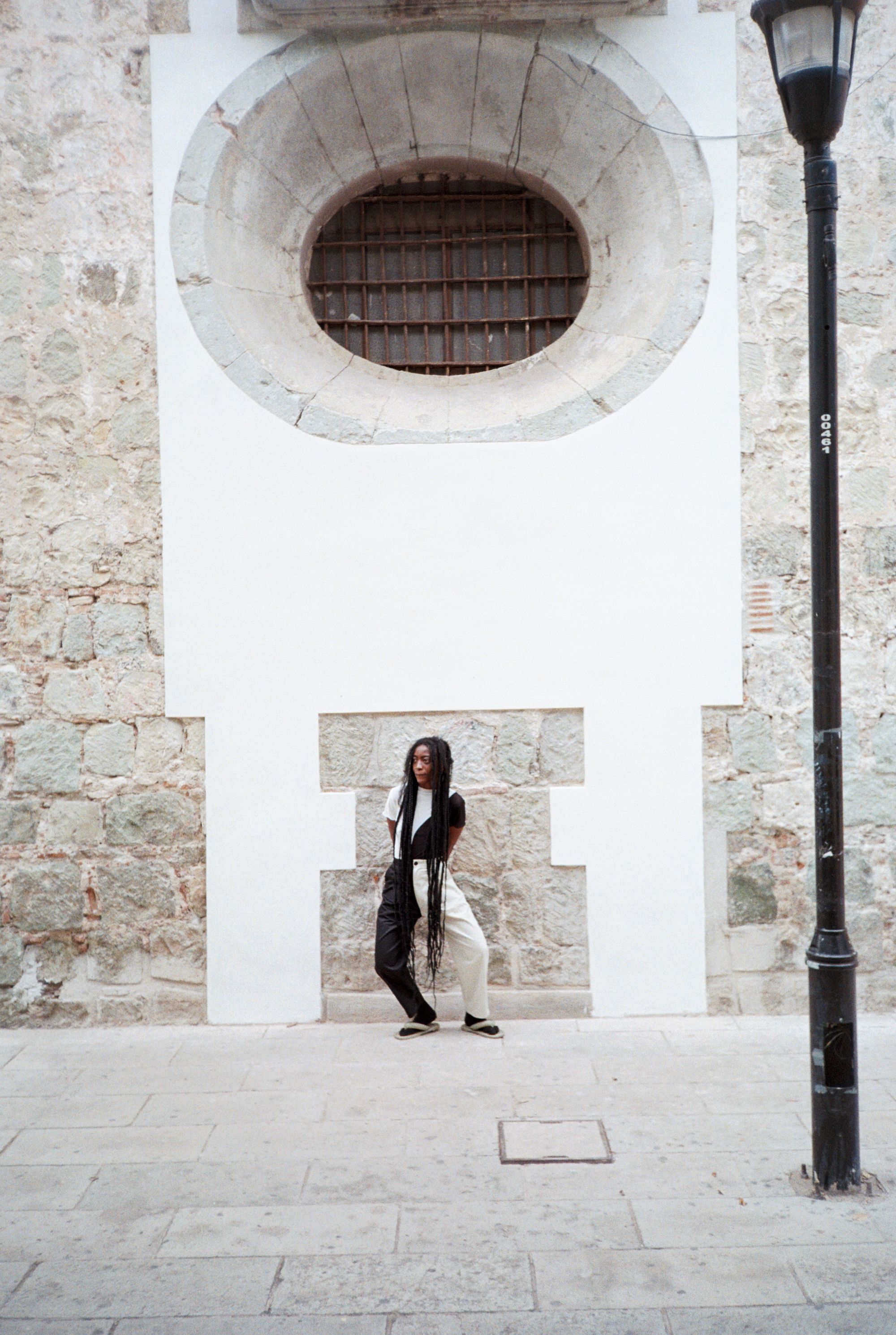
Britt:
Usually, it depends on what's going on in my life, where I am in relation to everything else around me. The next collection coming up is called Pangaea, which is the scientific term defining when all of the tectonic plates put together. As a consciousness we're all evolving closer or back together again.
The collection Asteroid was similar where it felt like the human race was so small and vulnerable, and it seemed that humanity was being pushed to wake up to universal truth that is much bigger and uncontrollable. The collections are built through symbolic perspectives that I have in certain moments of time that I feel could also be shared with others. Usually the story ties into my spiritual practice, which then links to my creative practice. I'm exploring things organically
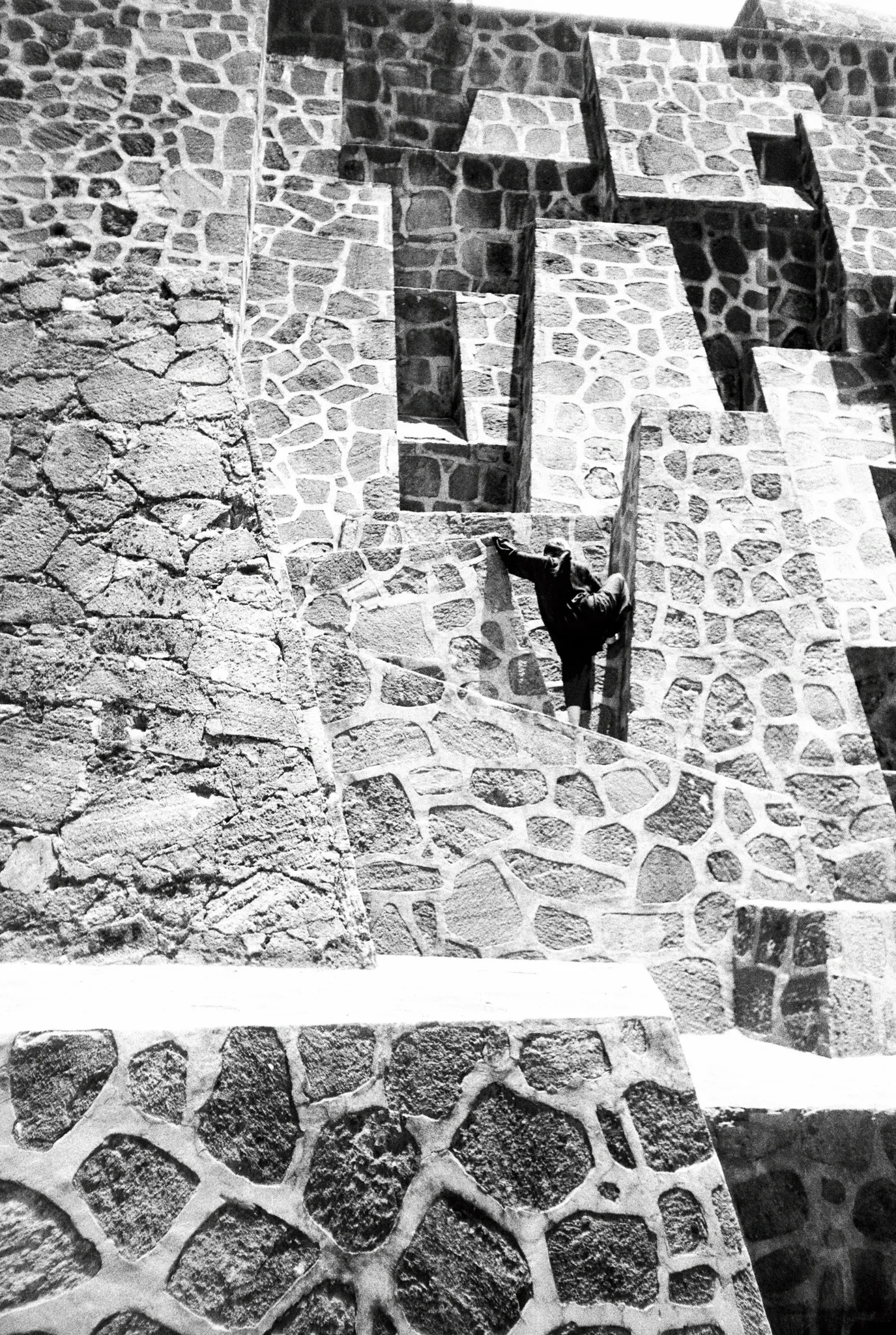
Robert:
What is your spiritual and practice now? Are you sitting or what are you doing?
Britt:
I'm doing TM. I changed from Vipassana
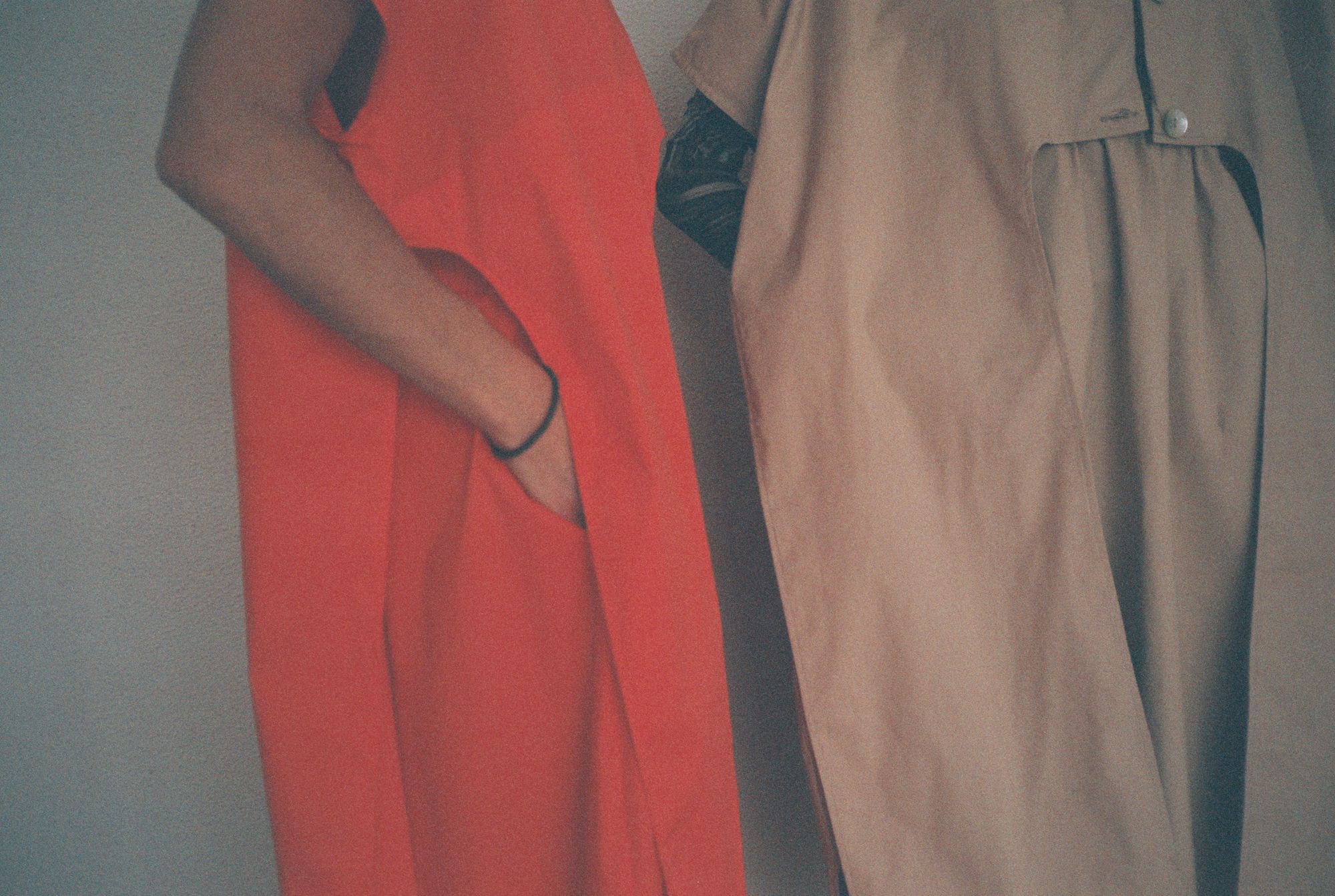
Robert:
Oh, TM. Nice. So, how is that?
Britt:
I know. I don't know if you experienced this with your practice, but it's hard to keep going, because you have to do a certain amount of time in order to receive the benefits. I changed to TM and I'm doing TM and yoga every day. So two times meditation and then yoga, I'm also reading a lot. I just did Ayahuasca this year, which was massive for me.
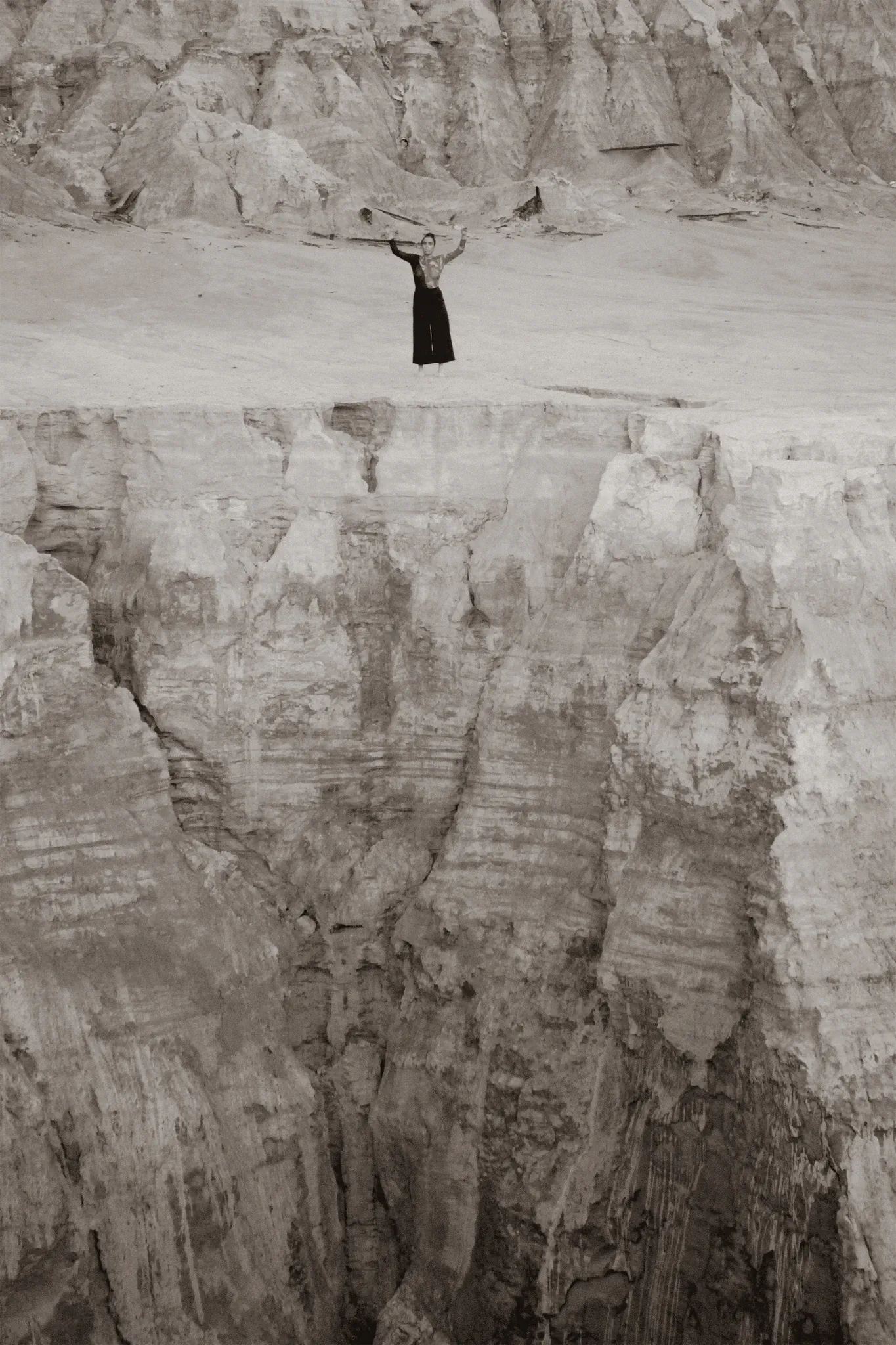
Robert:
You're still doing the housewares and the ceramics I saw, that's at least in one of the Sonora Collection. I think you had a video with some housewares in there. You had some nice pieces there. How do you feel about commercializing? Because if you're more of an artist, how do you feel about commercializing the work?
Britt:
That's a good question. It's tricky. It's very tricky. I think it's a constant dialogue that I'm having right now, because a lot of the brands work in collections, a lot of designers work in collections. So they're having to produce six months in advance. So, it's a bit trippy as an artist to organize my brain, to be able to do that. For me right now it's about following the data from a business perspective and just keeping it pretty simple and continuing to make what people are responding well too, while making sure that that exploration is always the main purpose. In terms of building a business, I'm finding that it's getting easier because I'm able to read the client's more and read what is working and what's not working. I'm trying to follow the data and keep my energy for creating.
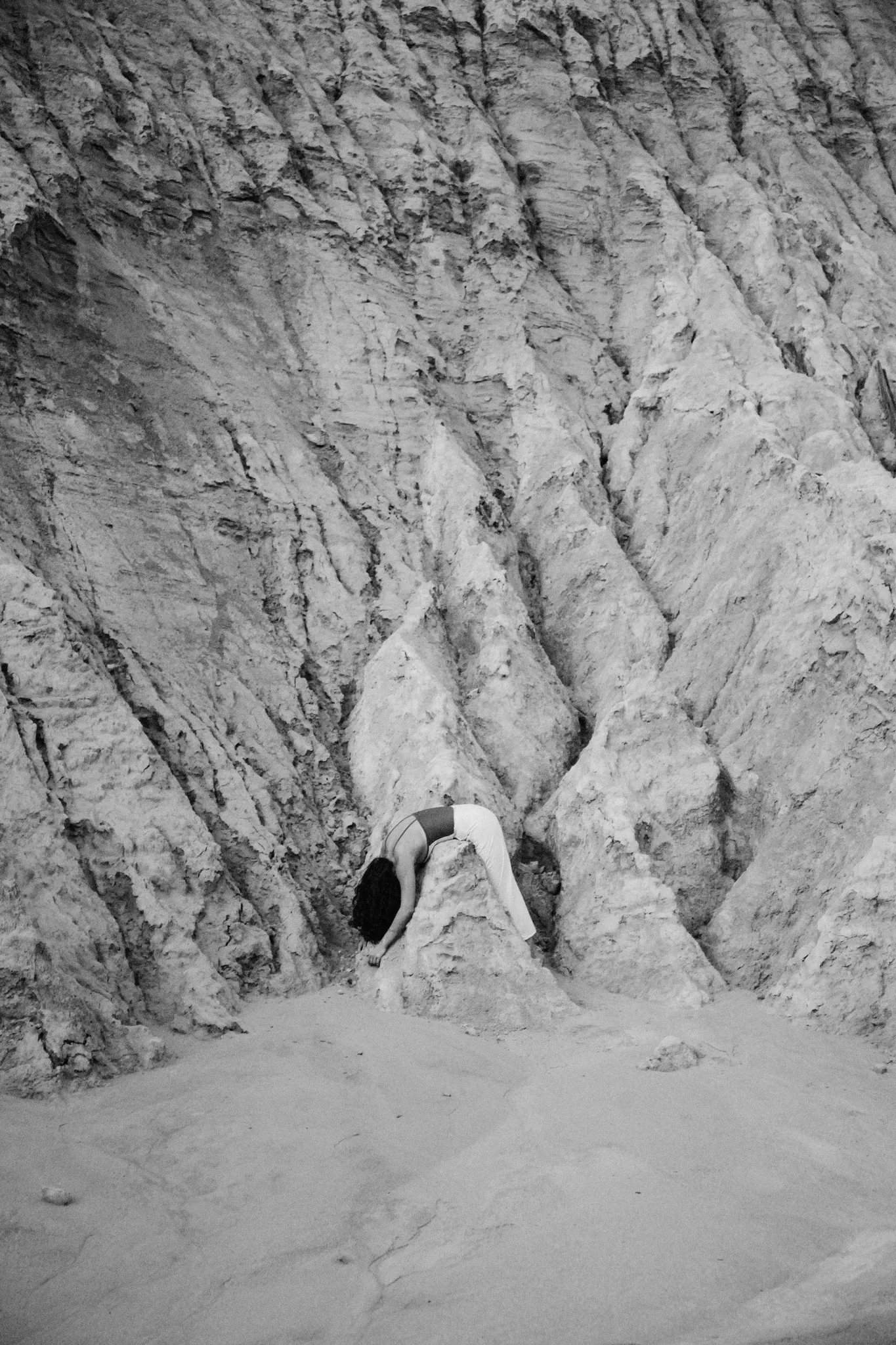
Robert:
So what's the split right now, in terms of wholesale and retail direct?
Britt:
It's probably about 70% through stores and then the other 30% through my website or through just friends and community here in Mexico. Sometimes the stores will do better and sometimes I'll do better online. Store orders have definitely been helpful for growing, it's a lot of work.
Robert:
So, how are you managing the production in Mexico? Have you found a factory or how are you dealing with that?
Britt:
I work with a female owned and run design studio. They have has their teams of people that they work with. I work with her to make the pieces and she'll work to outsource the productions through studios in Mexico. I do my sampling with another woman here as well, we work side by side two times a week.
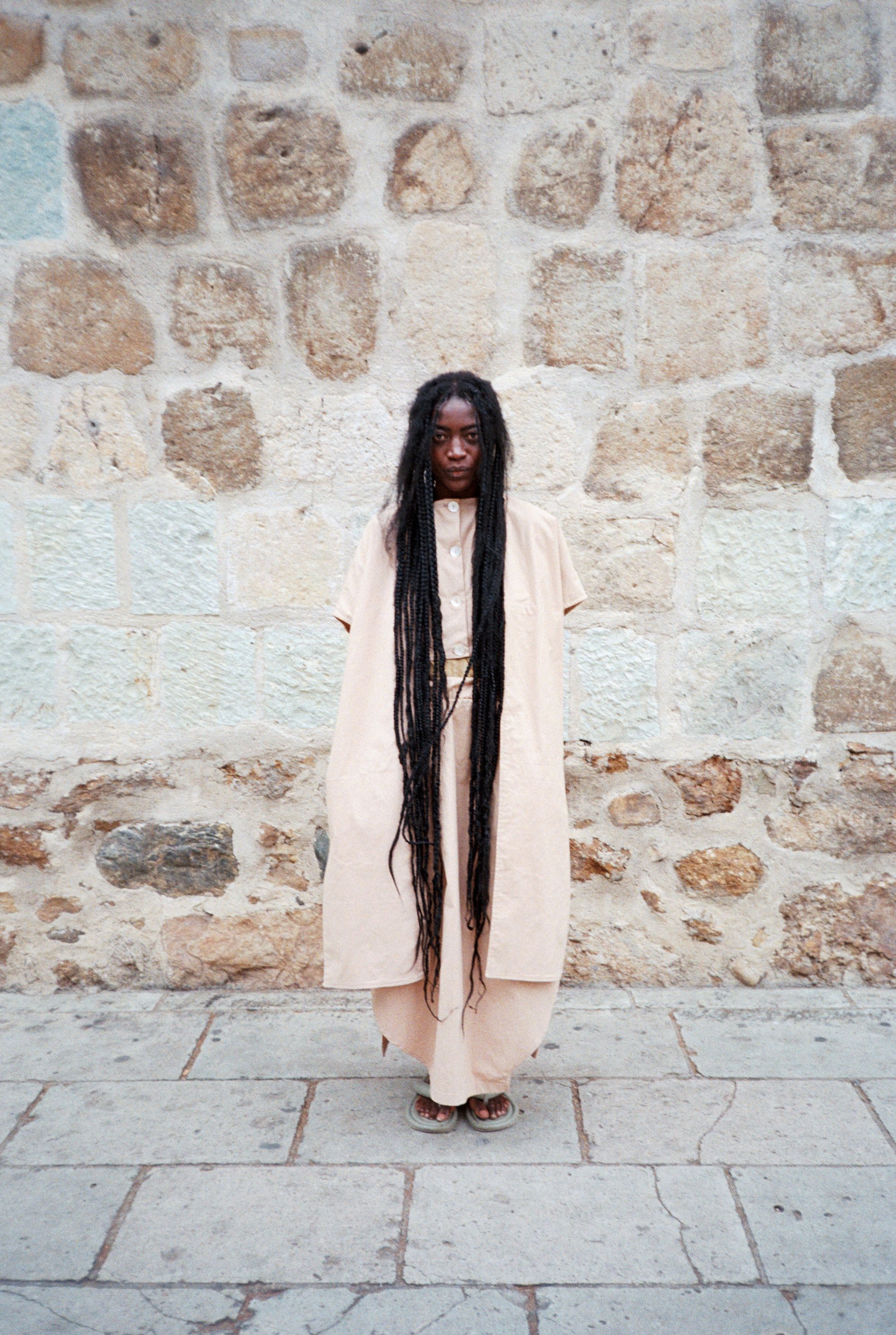
Robert:
So, you have a pattern maker whose working with that?
Britt:
Yeah, I've been working with both teams for two years now, we have good communication creatively at this point.
In terms of pattern making, we make a sample in the studio sometimes then bring it to the production studio where they digitalize and computerize all of the-
Robert:
The pattern work, and then they grade it for the sizing. Nice.
Britt:
Exactly. Exactly, but it's always a bit tricky because it depends what you're making. Like pleating was a whole other ball game. You have to cut everything by hand when making the pieces and when pleating the fabric it has to be a super controlled process.
If the pleating is heated to a little bit of a different temperature, it's going to react differently in the finished piece and reacts differently on the body. That was just really surprising because I had never worked with pleating before. I am happy to have the teams that I do because they are pretty up for the challenges like myself, we all make mistakes and then we improve and keep going.
Robert:
Mexico City is a cosmopolitan city, but how do you feel about being in Mexico being Australian, versus with your time in the States?
Britt:
It's super different. It's so different. I know you've had a lot of experience for this, but this is the first time I'm living in a place that's culturally different to where I'm from. It's been a big spiritual practice in itself, especially for patience. When you're the minority, you have to drop a lot of the control you think you may have. You're not going to change anything. You're not about to change anyone. You have to accept that this is the way that things are and figure out how to work with them. So if you want to work with them, you have to suck it up and do it, or figure it out. My partner Roberto has helped me a lot, when I get home sometimes tearing out my hair, he reminds me "well, that's because you're here. You're in Mexico.”
Robert:
What are some of the frustrations or cultural challenges that you need to learn to adjust to?
Britt:
Time, for sure, time and work ethic. Here I find the work ethic and the time thing is so different to what I'm used to. It can be frustrating to get out of my box of thinking when the mind thinks its way is the correct way.
Time and ethics are more elastic here. It's trickier to also keep your productions in line and not experience delays. You have to be 10 times more organized than you would in Australia or in the US, because nothing else is organized around you. You have to work double to get the organization structures in place because they don't exist. If you're going to go through the process, you have to be really on it. They're not going to hold your hand and walk you through it. It's very DIY.
Yeah, it's just been a process, I think also of accepting that my way is not the right way and trying to be more open and ask - how can I work here? It's interesting because working with US clients and working within the US market means that you do have to have those boundaries at the end of the day to survive in the industry.
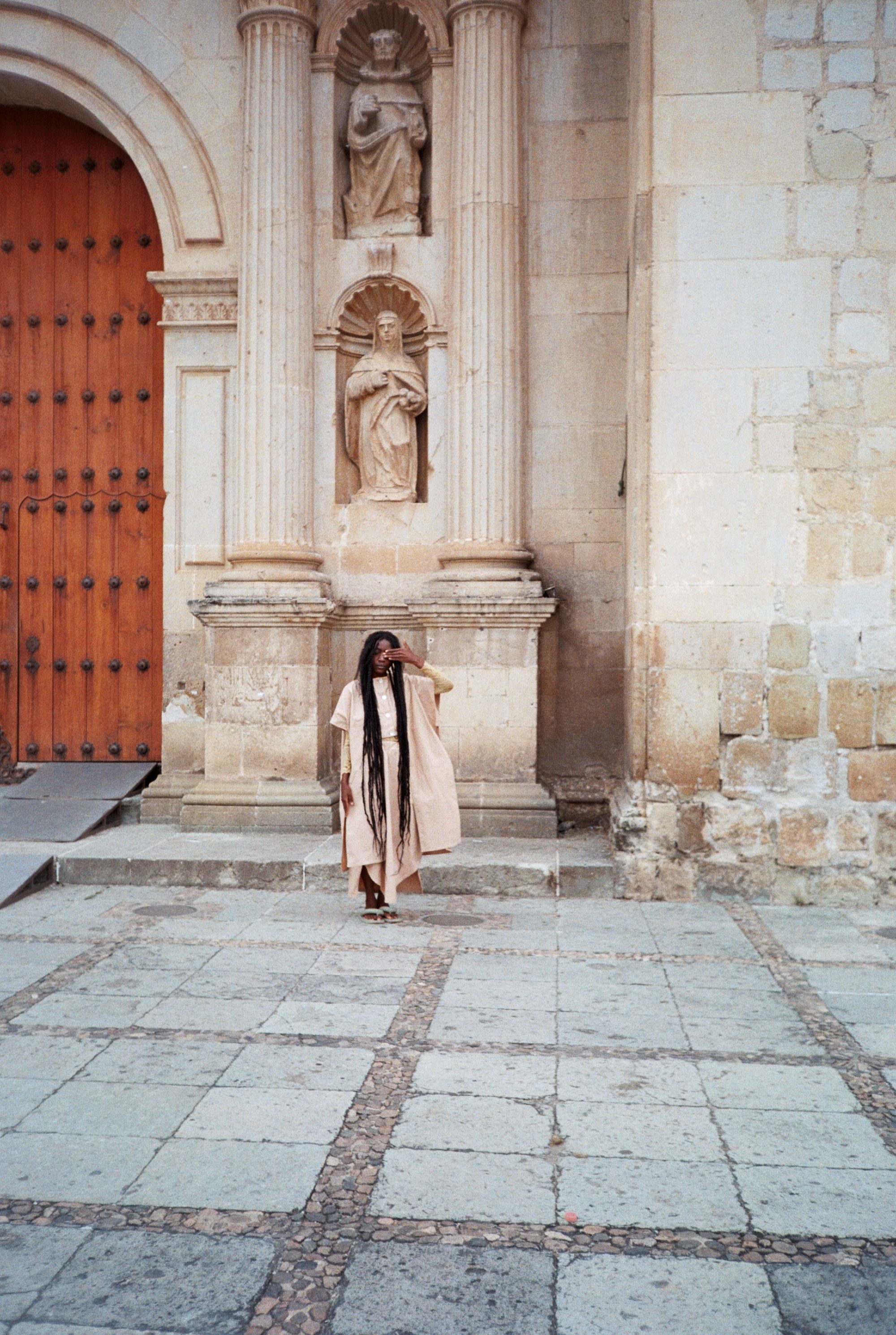
Robert:
Yeah. It's also South America. Latin America has different ways of doing things. So, what's easier in Mexico then, or what's better? The cultural richness? Obviously the cuisine, but anything that you're really enjoying?
Britt:
I think if you find the right people, they can be pretty open in terms of receiving you and what you're experiencing. It's a very kind culture. So usually, people are really relaxed and pretty easy going, I think more than in the US. In the US if you say one politically incorrect thing and the air becomes very serious. But here its more laid back, there are many people and there are many different realities that it can be a pretty open place in terms of human personalities and making space for that.
Robert:
Isn't it funny, because it's ironic because the Bay Area where you lived before is always about diversity, and oftentimes they're more close-minded than other places?
Britt:
Yeah, totally, I feel here people are a bit more realistic. They have to be because there are really complex characters and economic common conditions here. It's such a highly populated city with a very different economy than in Australia and USA. At the end of the day you have to learn to work together.
Robert:
So what's your next collection? I saw the Cosmic Breath collection, the Sonora and then Asteroid. You have the Pleats Collection, and then what's the next one you're working on?
Britt:
Yeah. Well, we are doing spring 2022. That one doesn't really have like a solid theme yet. It's still coming together last minute. We haven't offered that wholesale to stores yet because usually stores will buy SS / 22 in August. In February, we're going to release our next collection Pangea, which is introducing unisex for men. The project so far has been looking at clothing through a female point of but I haven't really sampled on men before, I'm now exploring that aspect and I am finding that women are identifying with these pieces too!
Robert:
The women always loved the men's clothes. Even at Voyager, they just want like a men's clothes for their bodies, the chore jackets and the jumpsuits. And not that those are traditionally just for men, but they always love those kinds of pieces.
Britt:
Yeah, exactly. Voyager, definitely had that mix to the men's wear, there was that Henrik Vibskov jacket that looked so good. You get to explore another feeling in yourself when crossing over genders.
I am still exploring how to tell the story of Pangea. Someone asked me the other day, "Are you going to work with maps?" And that made me think that maybe I will work with origami. I'm going to start to play with paper and maybe I can have some of those shapes translating through the collection and through the storytelling of that. So, that's also part of the process of making these collections is to get better at the storytelling and make sure that everything is unified.
Robert:
Nice. I saw on the videos you made, can you tell me about that? These videos, and there's another one with... I forgot the name. Circle, is at the video title?
Britt:
Yes, Circle. Those were really organic, how they came up. My friend Gabriel, he's a filmmaker and he reached out to me on Instagram and just said, "I'm really interested in working with you to do a collaboration, “I liked his work and his vibe, and we met and we became good friends. We went to the mountains to film, very close to where Rob and I recently bought land. I was inspired by the film Satyricon, have you ever seen that Fellini film?
Britt:
It theatrically portrays the human grind, the human condition of all going in an infinite evolving circle. A process of working so hard to realize that you're right at the very beginning of where you began, and when you realize that you begin another loop.
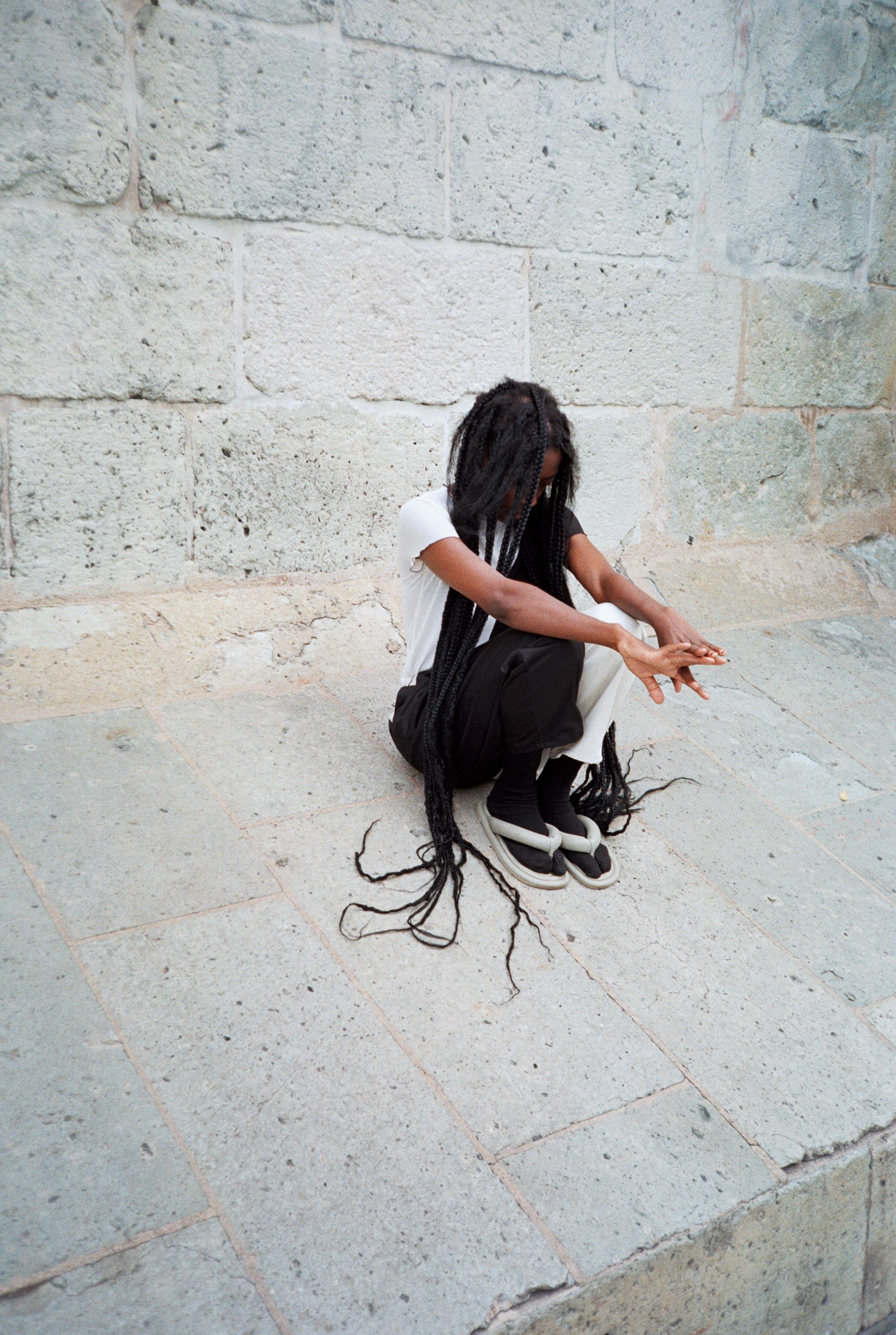
Britt:
So, it had this ritual about it. How rituals are a way of allowing us to be present during that circle and connected during this circle that we are always in. I made the story and the clothing, he managed the filming and we both did the editing together. So, it was a really lovely collaboration, we had a launch in Mexico City and shared that with our community. On the next film “Sonora” I collaborated with my friend Antonio, who was teaching film to students in Sonora Mexico. And he asked, "Why don't you do your film here?" And so, he invited me to go, I then invited the dancer, Renata and that was in it.
I would love to jump back into films when it presents itself again. I think it's a great way to deepen the storytelling of whatever you're doing.
Robert:
What are you going to do? Talking about directing, what are you going to direct this new land to do?
Britt:
What am I going to what?
Robert:
The new land you acquired, what are you going to direct it to do?
Britt:
Oh, yeah. We're going to start with a little house, like a little cabin, pretty small, very utilitarian. You have your bed, a little meditation spot, eating spot, kitchen and the nature will be the main thing. We’re going to play with the levels in building the house. I would like to have things that are really high which you can climb up to camp, and then levels that are also very low like small caves. Maybe in 10 years we would have an artist residency, we’ll see
Robert:
Oh, that's cool. That's exciting.
Britt:
Yeah. So we're still in the stage of finding out architect.
You'll have to come and stay.
Robert:
You're talking about Diego and Frida, I have you been to their house or whatever, up in Mexico City? I forget the neighborhood. Have you been there to the house? They had the two houses.
Robert:
I'm also curious about your muses on the website. You said a lot of the collections had muse. You had a, not a model, but you said muse on the website. Like on the photography, you'd label whoever the model was. And instead of saying model, you said muse. How are you finding these people? Or what are they inspiring the collection? Or what's the interaction there?
Britt:
Yeah, I feel that it's definitely a lot more intuitive with finding those muses. So, Renata, I met her and I was looking for someone to be in this film and that organically happened, she became the muse and the character in that film.
I avoid working with agencies because it can be very restricting. You only get a certain amount of time and even that can be expensive. I saw the last model for the pleating collection on an agency platform and I thought I would work with her if I had the chance!
Britt:
A couple weeks later she DM-ed me with an emoji, like stars or something, I wrote to her and I said, "Hey, I'm really interested in working with you." She had left her agency so it was a lot more flexible and we had a few hours shooting without any restrictions on where you can use the photos or how many photos you get at the end, you know? So it was good. I had full creative freedom.
I think of the finding a muse like casting an actor. You're casting the face to represent what you're saying. I think it’s a big aspect of connection and intuition that guides that storytelling process.
Robert:
Yeah, of course. That's nice. It almost seems like you have a lot of cosmic energy. They just come to you. You wanted that model and then you couldn't afford it, but then the universe still provided somehow. You know what I mean?
Britt:
Yeah. Sometimes we have help, so that's nice. And sometimes it doesn't work, but sometimes it does. And that's really nice when it flows. I think when you have a strong intention and something good, it's a good fertilizer for something good to grow.
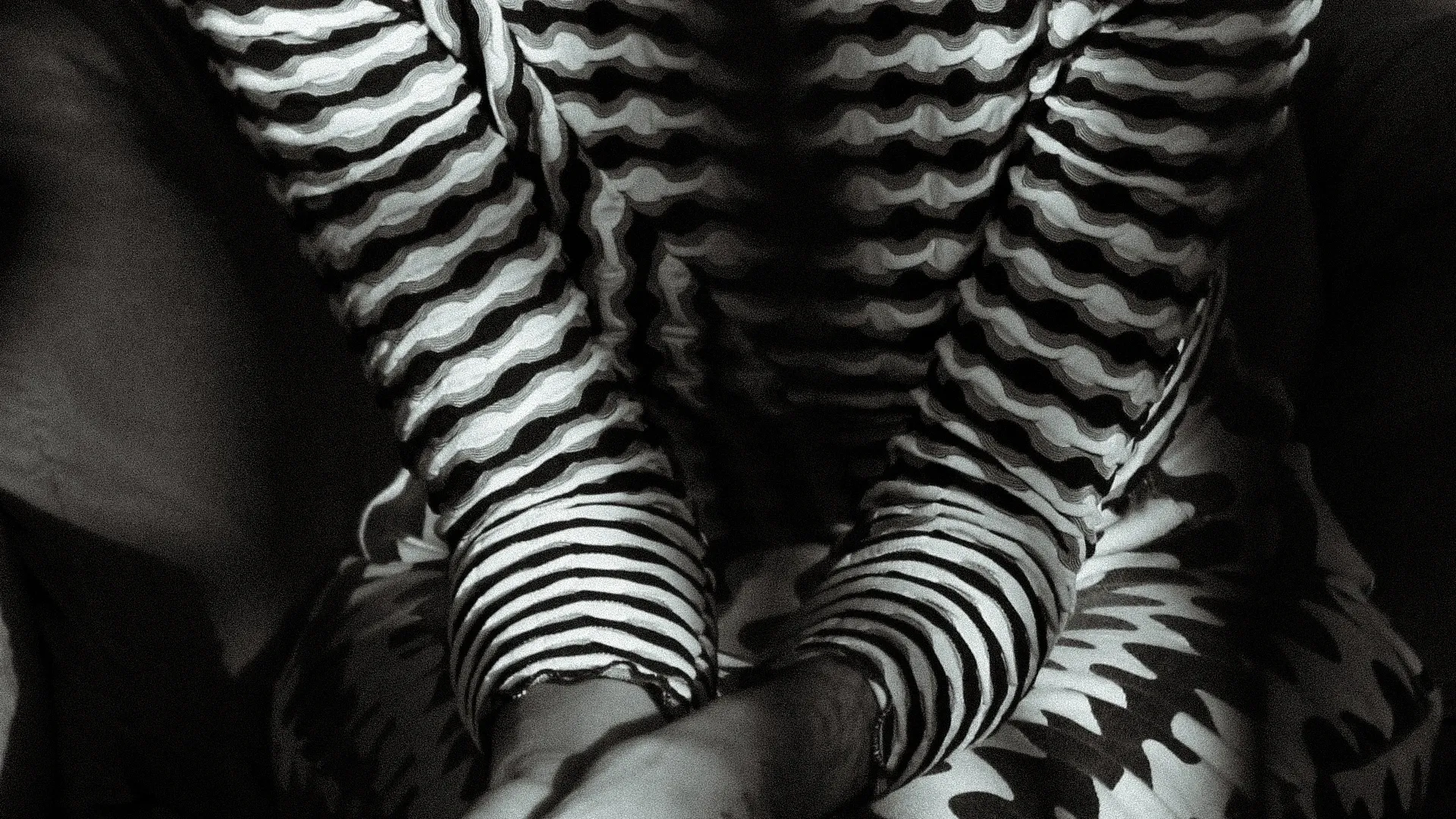
Robert:
Is there anything else that you want to share about what you're working on or life or anything?
Britt:
Yeah, well, probably. There's probably many things but the main one is the project is an exploration of alchemy in life. The putting together of the concepts, models or ideas creates a consistent thread of breath that is solidified through form.
Robert:
It's just nice to see your design evolve from the home wares to the full clothing, to storytelling, to directing. So, I think it's becoming a bigger and bigger circle that you're including under it, the objects and maybe spirituality and life energy and people. So, it's nice to see this.
Britt:
Do you think that there's a synchronicity there or a thread that links everything?
Robert:
I think it's just you in the middle and then you're kind of lassoing things that are of interest, and making that circle bigger and bigger and bigger, and then pulling them. It's almost like constellations, you're making a constellation out of the things in your life. So the objects, the people, the homewares, the art practice, maybe the music you choose, the model. So, it's just like any creative practice, but it's nice to have you central. The thing with me and I can feel your person in it. It's not like a different type of brand where there's many people, maybe this is your personal project and you're the Alchemist in this one.
Britt:
Yes, for sure. Yeah. And I definitely want to keep it that way. Keep it as strong storytelling and keep it as an art project rather than a big industrialized fashion brand. I feel we have enough of those around.
Robert:
There's always that edge you have to balance because you obviously have to pay the bills. But I think nowadays the people want a narrative that tells to them or speak to them, and they're willing to participate in that. So, I think that's really important, the storytelling aspect more than almost what you're making. I’m enjoying watching your collections and your alchemy. Thank you so much for your time.
Connect and support Nin Studio